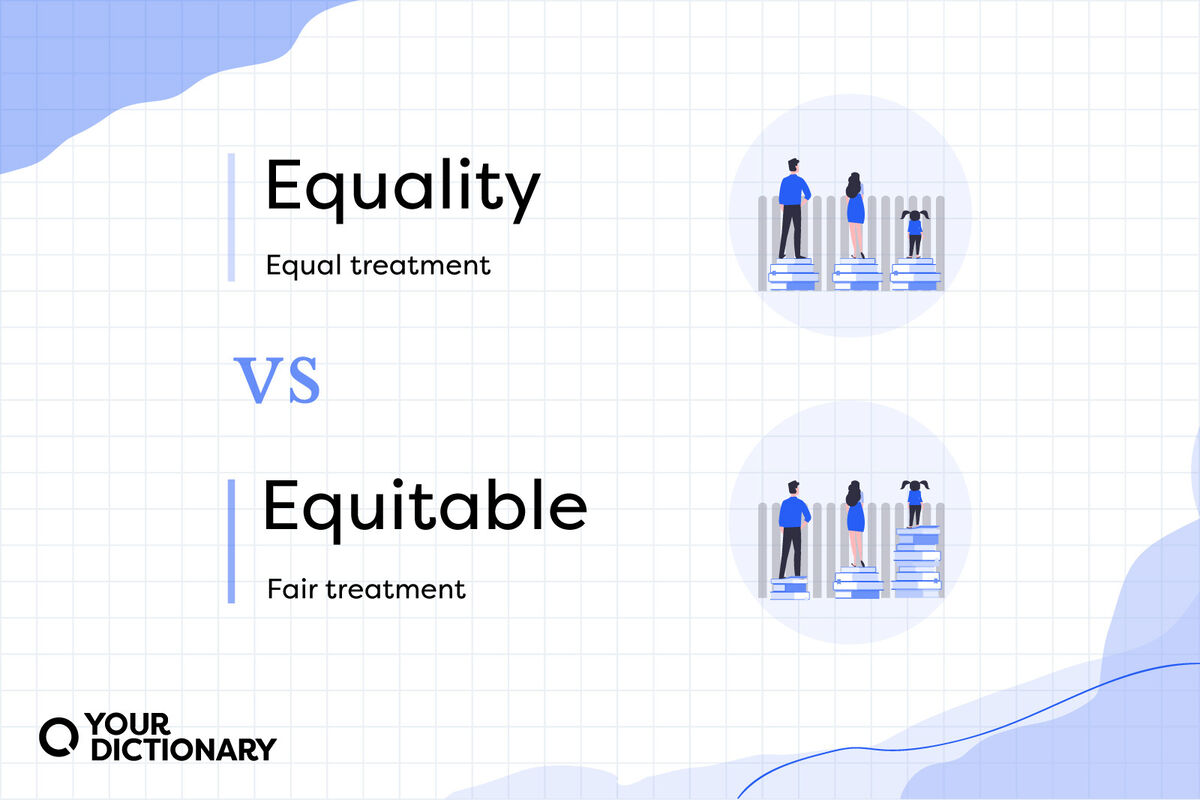
Equality and equity sound similar enough that many people use them interchangeably. But ensuring equal rights isn’t enough for a society to address all of its problems. Opportunities must also be equitable — otherwise, the society cannot function.
Equality: Everyone Is the Same
When everyone is treated the same way, it’s called equality. People of all races, genders, sexual orientations and religions having the same civil rights is a state of equality — no one is more important (or less important) than anyone else.
The word comes from the Latin aequalitas and French égalité, meaning “likeness.” In the 14th century, equality referred to an equal number or amount of something, and came to its modern meaning of “identical, similar” a century later.
Examples of Equality
Egalitarian societies focus on equal treatment and equality among its citizens. Examples of equality in such a society may include:
- All citizens receive $100 stimulus payments from the government.
- Teachers assign the same work to every student.
- Doctors treat all patients who come to the hospital
- Government buildings are open to all citizens.
These types of policies are a good first step to ensuring that a society is not prioritizing one class’s needs over another. However, equality is only the first step.
Equity: Everyone Is Treated Fairly
While equality focuses on everyone being treated the same way, equity focuses on the fairest treatment of each individual. An equitable society acknowledges that everyone is different, and some need more assistance to reach opportunities which others can easily access.
Equity comes from the Latin aequitas and French equite, meaning “fair, impartial.” Its modern usage is derived from the Roman concept of naturalis aequitas (“natural equity”), the principles of which would correct or supplement the law. For example, if a law affected a poor family more harshly than a wealthy family, the principle of naturalis aequitas would adjust the law more fairly.
Examples of Equity
At first glance, it seems like equality and equity really are the same thing. But equity focuses on leveling the playing field, rather than treating everyone as if they have access to the same opportunities. Equitable adjustments to equal rights may include:
- All citizens receive $100 stimulus payments from the government, and working-class citizens receive an additional $100.
- Teachers assign the same work to every student, but students with visual impairments receive large-print copies of the work.
- Doctors treat all patients who come to the hospital, but patients with emergencies are seen before non-urgent cases.
- Government buildings are open to all citizens, so they are equipped with accessible ramps for people in wheelchairs to use.
In these cases, the equitable adjustments do not give protected classes an advantage over others. They extend opportunities to everyone by accommodating individual differences.
The Key Is in Their Antonyms
If it still seems like the difference between equality vs. equity is too close to call, consider their antonyms:
- inequality - people are treated differently
- inequity - people are treated unfairly
An example of inequality might include a baseball team where a left-handed batter isn’t allowed to hit. With inequity, that player is allowed to play, but there are no accommodations for him — he has to hit the ball right-handed, which results in a strikeout every time. He doesn’t have access to the same opportunities (a home run) as everyone else.
Not All Equality Is Equitable
It’s important to note that equality isn’t necessarily equitable — and equity isn’t necessarily equal. A situation where everyone is treated the same way may be inherently unfair to those in different circumstances, while making accommodations for someone who doesn’t have the same access may appear to be unfair to those who don’t need accommodations.